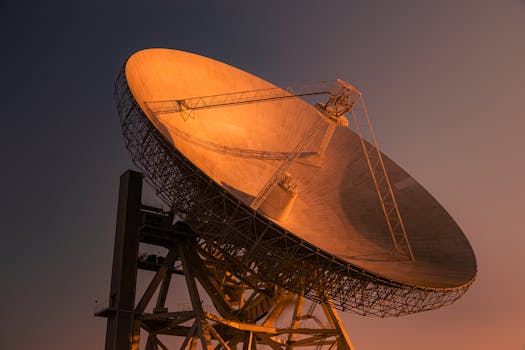Satellite Telecommunications 2023: Key Developments and What They Mean for the Industry

Satellite Telecommunications 2023: Key Developments and What They Mean for the Industry
Satellite Telecommunications 2023 has been a remarkable year for the satellite telecommunications industry, with numerous breakthroughs and advancements that are transforming the way we communicate globally. The industry has seen significant investments, technological innovations, and strategic partnerships that are poised to revolutionize the satellite telecommunications landscape. In this article, we will delve into the key developments of 2023 and their implications for the industry.
The satellite telecommunications industry has experienced tremendous growth in recent years, driven by the increasing demand for high-speed internet, mobile connectivity, and satellite-based services. According to a report by MarketsandMarkets, the global satellite telecommunications market is expected to reach $7.8 billion by 2027, growing at a Compound Annual Growth Rate (CAGR) of 9.5% from 2022 to 2027. This growth is attributed to the rising adoption of satellite-based services, such as satellite broadband, satellite navigation, and satellite-based earth observation.
Key Developments in Satellite Telecommunications 2023
One of the significant developments in 2023 is the launch of new satellite constellations, such as the Starlink constellation by SpaceX and the OneWeb constellation by OneWeb. These constellations aim to provide global coverage, high-speed internet, and low-latency connectivity, enabling a wide range of applications, including broadband services, IoT, and 5G networks. The launch of these constellations has sparked a new era of competition in the satellite telecommunications industry, driving innovation and reducing costs.
Another significant development is the advancement of satellite technology, including the development of new satellite platforms, such as the Intelsat EpicNG platform and the Seakr Engineering Inc. platform. These platforms offer improved performance, increased capacity, and enhanced flexibility, enabling satellite operators to provide a wider range of services and applications. Furthermore, the development of new satellite antennas, such as phased array antennas, has improved the efficiency and effectiveness of satellite communications.
Impact of Key Developments on the Industry
The key developments in 2023 have significant implications for the satellite telecommunications industry. The launch of new satellite constellations and the advancement of satellite technology are expected to drive growth, increase competition, and reduce costs. The industry is expected to witness a surge in demand for satellite-based services, including broadband services, IoT, and 5G networks. Furthermore, the development of new satellite platforms and antennas is expected to improve the performance and efficiency of satellite communications, enabling a wider range of applications and services.
The growth of the satellite telecommunications industry is also expected to have a positive impact on the global economy. According to a report by GSMA, the mobile industry, which includes satellite telecommunications, is expected to contribute $4.9 trillion to the global economy by 2025, accounting for 4.8% of global GDP. The industry is also expected to create new job opportunities, drive innovation, and improve the quality of life for people around the world.
Challenges and Opportunities
Despite the significant developments and growth prospects, the satellite telecommunications industry also faces several challenges. One of the major challenges is the issue of space debris, which poses a significant risk to satellite operations and the environment. The industry must adopt sustainable practices and develop technologies to mitigate the impact of space debris. Another challenge is the regulatory environment, which can be complex and inconsistent across different countries and regions. The industry must work with regulators to develop a more favorable and consistent regulatory framework.
However, the satellite telecommunications industry also presents several opportunities for growth and innovation. The development of new satellite constellations and technologies is expected to enable a wide range of new applications and services, including IoT, 5G networks, and satellite-based earth observation. The industry must invest in research and development, adopt new technologies, and develop strategic partnerships to capitalize on these opportunities and drive growth.
See more:
https://www.marketsandmarkets.com/
https://www.starlink.com/
https://www.intelsat.com/

